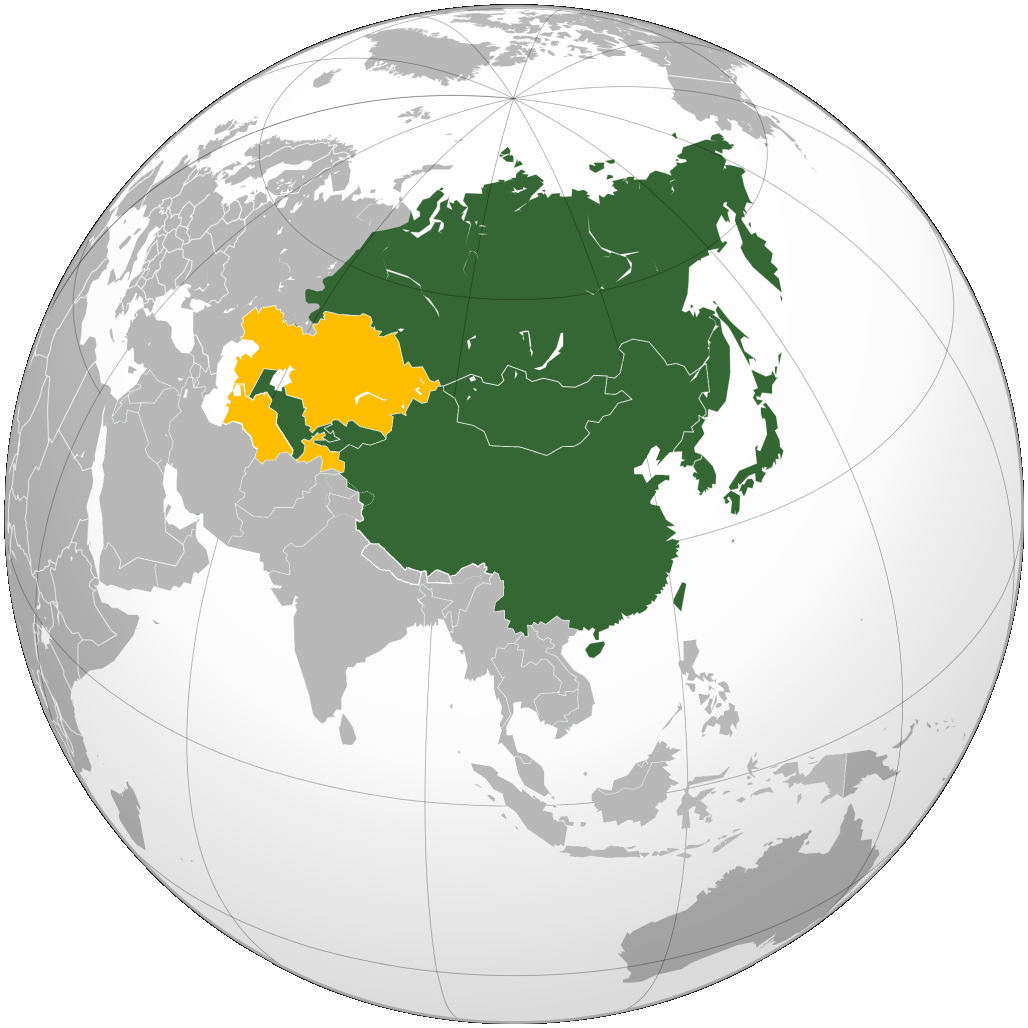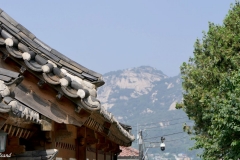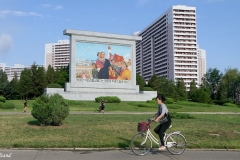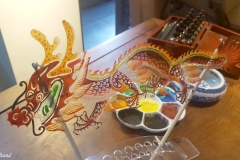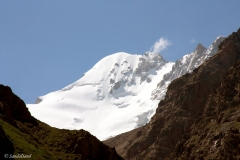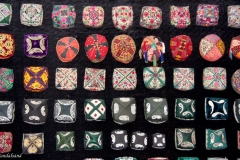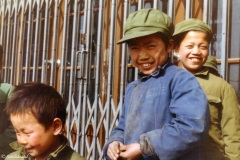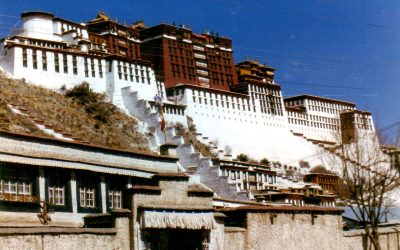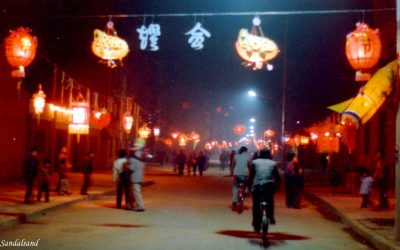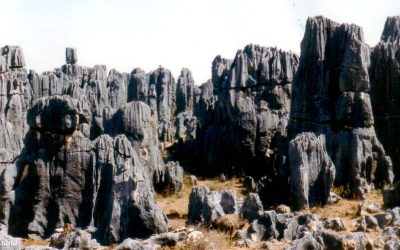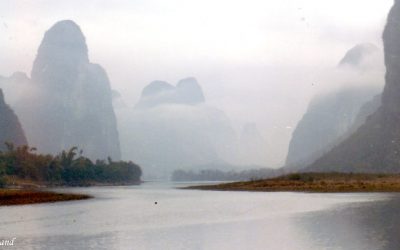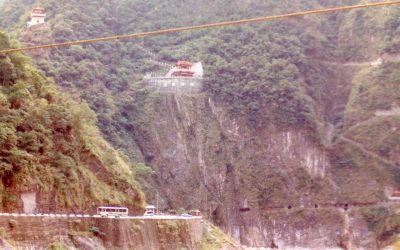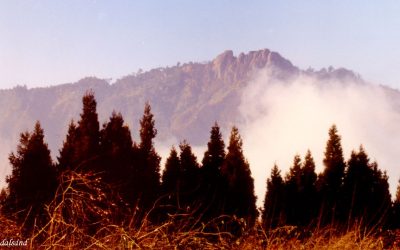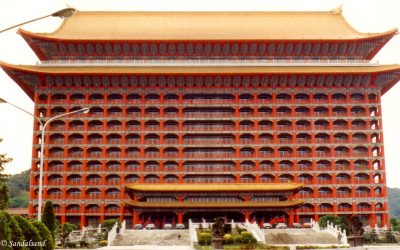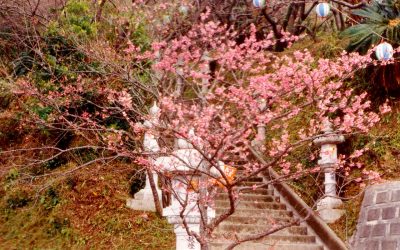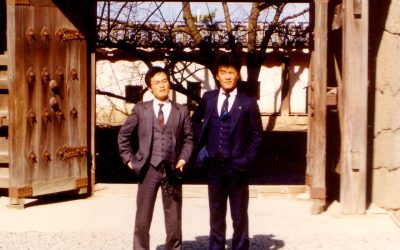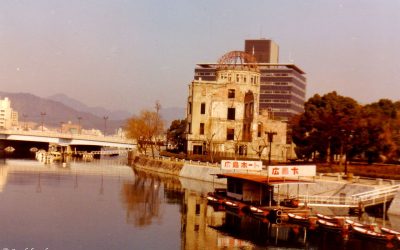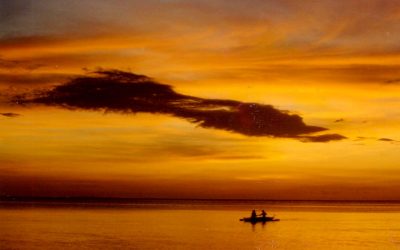Intro
Countries
Photos
Blog
Facts
Overall impressions
These women emerged from their houses at the Sera monastery in Tibet in 1985. They brushed their hair and aprons and asked us to take their pictures, so we did.
However, they were disappointed to learn that we didn’t have Polaroid cameras with instant processing and printing. They must have encountered or heard about tourists with such cameras before. No “travellers” had them, as I wrote about this scene many years ago.
In fact, this situation does not seem typical of East Asia in my opinion. People there are generally very up-to-date with technology. My impressions of this part of the world are certainly characterized by human curiosity and friendliness, combined with a traditional sense of hospitality. This holds true not only in remote places like Tibet and Mongolia but also in modern-day Japan.
An even stronger impression is the hectic way of life most East Asians lead. This is partly due to living in one of the world’s most densely populated regions, but I also believe there are cultural reasons for this.
To counteract this, it’s no surprise that the region has developed religious philosophies emphasizing deep meditation and mental balance. Today, East Asian society faces many challenging balancing acts: old and new; traditional and modern; work and leisure; manual and mental; stagnation and growth; poverty and prosperity; collectivism and individualism.
Countries
China | Japan | Kazakhstan | Kyrgyzstan | Mongolia | North Korea | Russia | South Korea | Taiwan | Tajikistan | Turkmenistan | Uzbekistan
There are three different regions under this heading. North Asia is by Wikipedia defined as Russia east of the Ural Mountains. East Asia is a larger region of six countries. Central Asia consists of five stan-countries.
Sandalsand has been to nine independent countries out of 12. The links above open lists with all articles from that particular country.
Taiwan’s status is a problem, in more than one way. I include it in this list for practical purposes.
Photo galleries
Open the box to view a multitude of picture galleries from Sandalsand’s travels in this region.
Click to show or hide
Open the box to view picture galleries from my travels in this region. I would recommend you to open a picture gallery in a new tab or window.
Distance tests a horse’s strength. Time reveals a person’s character.” (Chinese proverb)
Posts from North, Central and East Asia
World Heritage #0707 – The Potala Palace
It has been a long time since the Dalai Lama was able to command his feudal state from the Potala Palace in Lhasa. The UNESCO World Heritage List...
Sichuan – Hot food and New Year’s celebrations
I arrived in Sichuan on my round-trip of China. In Kunming I found hot food, exciting street life and a stone forest outside the city. I went on to...
World Heritage #1248 – South China Karst
There are strange rock formations in many parts of the world. The South China Karst in southern China are really remarkable. The UNESCO World...
From Hong Kong to Guangzhou and Guilin
I went from Hong Kong into Guangzhou and on to Guilin, in southern China. By the time I got there, I never imagined that I would spend several weeks...
Hong Kong, a wonderful city state
The first time I got to Hong Kong, it was a wonderful city state and still a Crown colony under the British. This article is part of a diary based...
Pictures from Taiwan
This is a collection of Sandalsand's pictures from Taiwan. Most images are from Taipei, in addition to Taroko Gorge and Alishan in central parts of...
The beautiful scenery in the interior of Taiwan
There is a beautiful scenery inland on the Chinese island state of Taiwan, separated from the mainland. I went for a couple of hikes. This article...
Taipei’s snake market
Taipei the capital of Taiwan was exciting. I found a snake market, immense treasures and an oversized hotel. This article is part of a diary based...
Okinawa – Mild winds, cherry blossoms
On Okinawa I found mild winds, cherry blossoms but also a terrible WW2 history. I spent a few days in the main city of Naha and went sightseeing on...
Hitchhiking on Shikoku and a long sea journey
I had left Hiroshima and crossed over to the island of Shikoku. There I was lucky to get a lift and found my way to Kobe. From there i boarded a...
Hiroshima and a terrible past
Hiroshima has a terrible past. I found a nice place to stay, explored the memorials and had time to write a letter back home. This article is part...
World Heritage #0775 – Hiroshima
The Atomic bomb has been used twice with the aim to inflict death. The first time was over Hiroshima in Japan. Official facts Full name of site:...
Kyoto – Harmonious places to rest
In Kyoto I had a look into a splendid past and found harmonious places to rest. My journey from Tokyo was of the adventurous kind. This article is...
World Heritage #0688 – Kyoto
Kyoto, the old capital of Japan offers a very fine selection of temples and gardens. The Historic Monuments of Ancient Kyoto is also a world...
Tokyo – The first days in a distant land
Tokyo - I left home and was about to experience my first days in a very distant land. I had never been so far away ever before. This article is part...
A journey to East and South East Asia in 1985
This was my first backpacking experience. Urged by more experienced friends on the university I decided to take a semester off from my studies. The...
When you have completed 95 percent of your journey, you are only halfway there. (Japanese proverb)
A fact sheet
North Asia

- Region: North Asia
- States and territories: Russia
- Population (2017): 33,765,005
Geography
North Asia or Northern Asia, sometimes known as Siberia, is a subregion of Asia, consisting of the Russian regions of Siberia, Ural and the Russian Far East – an area east of the Ural Mountains. The region is sometimes also referred to as Asian Russia. The total population of North Asia is about 33 million. North Asia makes up more than 75% of the territory of Russia, but only 22% of its population, at a density of 2.5 people per km2.
Demography
There are around 38 million Russians living east of the Ural Mountains, the informal divide between Europe and Asia. Native Siberians are a minority in Siberia/North Asia due to the Russification process during the last three centuries.
The Buryats numbering 445,175 is the largest ethnic minority group in Siberia. There are 443,852 Yakuts (Russian Census of 2002) living in Siberia. According to the 2002 census there are 500,000 Tatars in Siberia, but 300,000 of them are Volga Tatars who settled in Siberia during periods of colonisation. Other ethnic groups that live in the region and make a significant portion are ethnic Germans and they number about 400,000.
Source: Wikipedia.
East Asia
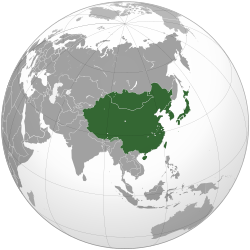
- Region: East Asia
- Area: 11,839,074 km2
- Population (2016): 1,641,908,531
- Density: 140/km2
- States: China, Japan, Mongolia, North Korea, South Korea, Taiwan
Geography
East Asia is the eastern subregion of the Asian continent, which can be defined in either geographical or ethno-cultural terms. Geographically and geopolitically, the region constitutes Greater China (Greater China consists of Chinese mainland, Hong Kong, Macau and Taiwan), Japan, Mongolia, North Korea and South Korea.
Religion
The region was the cradle of various ancient civilizations such as Ancient China, ancient Japan, ancient Korea, and the Mongol Empire. Major religions in East Asia include Buddhism (mostly Mahayana), Confucianism and Neo-Confucianism, Taoism, Ancestral worship, and Chinese folk religion in Mainland China, Hong Kong, Macau and Taiwan, Buddhism and Shintoism in Japan, and Christianity, Buddhism and Sindoism in Korea. Shamanism is also prevalent among Mongols and other indigenous populations of northern East Asia such as the Manchus.
Demography
At the present time East Asians comprise around 1.6 billion people, making up about 38% of the population in Continental Asia and 22% of the global population. The region is home to major world metropolises such as Beijing, Hong Kong, Seoul, Shanghai, Taipei, and Tokyo. Although the coastal and riparian areas of the region form one of the world’s most populated places, the population in Mongolia and Western China, both landlocked areas, is very sparsely distributed, with Mongolia having the lowest population density of a sovereign state. The overall population density of the region is 133 inhabitants per square kilometre, about three times the world average of 45/km2
Source: Wikipedia.
Central Asia
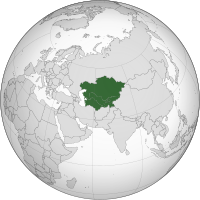
- Region: Central Asia
- Area: 4,003,451 km2
- Population: 69,787,760
- Pop. density: 17.43/km2
- Countries: Kazakhstan, Kyrgyzstan, Tajikistan, Turkmenistan, Uzbekistan
- Nominal GDP: $295.331 billion (2012)
- GDP per capita: $6,044 (2012)
Geography
Central Asia stretches from the Caspian Sea in the west to China in the east and from Afghanistan in the south to Russia in the north. The region consists of the former Soviet republics of Kazakhstan, Kyrgyzstan, Tajikistan, Turkmenistan, in addition to Uzbekistan. It is also colloquially referred to as “the stans” as the countries generally considered to be within the region all have names ending with the Persian suffix “-stan”, meaning “land of”.
By and large Central Asia has a population of about 70 million. It consists of five republics: Kazakhstan (18 million), Kyrgyzstan (6 million), Tajikistan (9 million), Turkmenistan (6 million), and Uzbekistan (31 million). Moreover, Afghanistan (35 million), which is a part of South Asia, is also sometimes included in Central Asia.
Demography and history
Otherwise Central Asia has historically been closely tied to its nomadic peoples and the Silk Road. It has acted as a crossroads for the movement of people, goods, and ideas between Europe, Western Asia, South Asia, and East Asia. The Silk Road connected Muslim lands with the people of Europe, India, and China. In time, this crossroads position has intensified the conflict between tribalism and traditionalism and modernization.
In pre-Islamic and early Islamic times, Central Asia was predominantly Iranian, populated by Eastern Iranian-speaking Bactrians, Sogdians, Chorasmians and the semi-nomadic Scythians and Parthians. After expansion by Turkic peoples, Central Asia also became the homeland for the Kazakhs, Uzbeks, Tatars, Turkmen, Kyrgyz, and Uyghurs. Due to this, Turkic languages largely replaced the Iranian languages spoken in the area.
From the mid-19th century until almost the end of the 20th century, most of Central Asia was part of the Russian Empire and later the Soviet Union, both Slavic-majority countries. Moreover, the five former Soviet “-stans” are still home to about 7 million ethnic Russians and 500,000 Ukrainians.
Source: Wikipedia. All quotes are on a Creative Commons Attribution-ShareAlike License. Date: 2018-06-22

